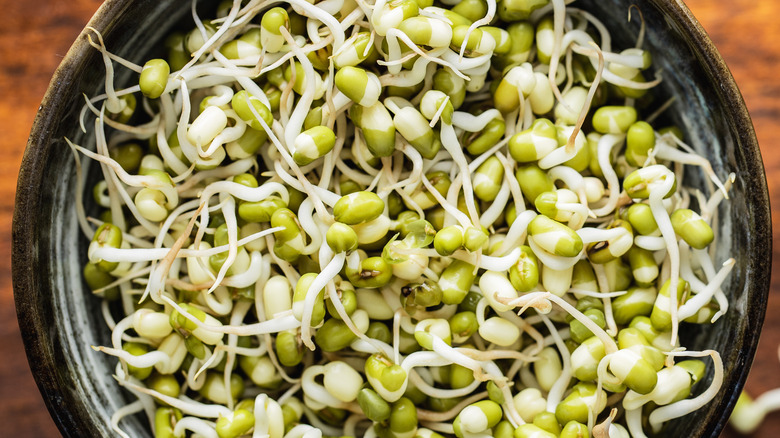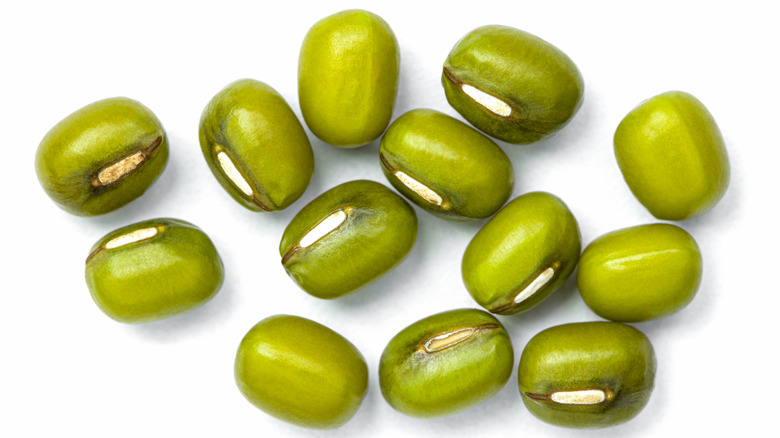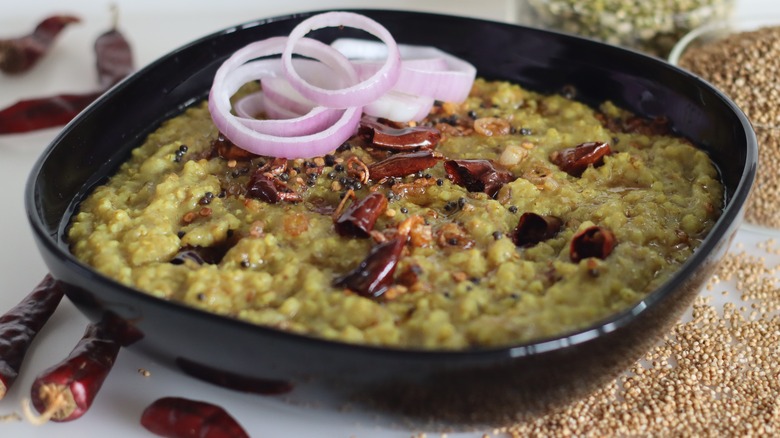What Are Mung Beans And What Can You Use Them In?
There's that old playground song about beans being 'the musical fruit.' Furthermore, the more that you consume, the better you will apparently feel, and as such, you should eat them for every meal. Though the rest of that children's refrain is a bit too crass to repeat, there is actually some truth behind it.
You should eat your legumes. They're good for you. Adding a few cups of beans or a helping of lentils into your daily diet can have a number of health benefits. They're packed with fiber and protein, as well as essential minerals like iron. Did you know that this musical fruit, when eaten regularly, can lower your risk of developing type 2 diabetes, and lessen the impact that the disease can have on those who suffer from it?
While you might be aware of chickpeas, peanuts, and kidney beans, there's another legume out there that many of you may be unfamiliar with. The unassuming, lentil-like mung bean is jam-packed with legume nutrients, and it also stars in a number of delicious dishes.
Mung beans, the lesser-known green bean
The reason that many of you may be unfamiliar with mung beans could be attributed to the plant's relative regionality. Mung beans are primarily grown and eaten in the Indian subcontinent and Southeast Asia.
If you saw a mung bean, you might immediately assume that it was a pea, given the fact that both legumes are small and brownish-green. However, each mung bean has a small white dot on its exterior, which is comparable to the black spot that characterizes the primarily cream-colored black-eyed pea. In terms of culinary use, mung beans are probably best thought of as being akin to lentils.
Whether you call it a mung bean, a green gram, a green moong or maash, you cannot deny that this little legume packs a powerful nutritional punch. Nearly 25% of the bean consists of pure protein. Of course, there is the legume's aforementioned ability to guard against type 2 diabetes. Additionally, mung beans are filled with antioxidants and amino acids.
The many dishes that feature mung beans
Despite being, at least in terms of the regions where it is a cuisine staple, a somewhat geographically isolated food, there is a pretty remarkable variation between the different dishes that center around mung beans.
For example, Indian chefs and home cooks have been boiling pots of dal — a rich, fragrant soup made from mung beans and other legumes — for thousands of years. Ginisang Munggo, a sauteed mung bean, spinach, and pork stew, is a feature of Filipino cuisine. In Korea, chefs fry up pancakes that are made from mung bean flour, pork, and kimchi. The best mung bean pancakes (known as bindaetteok) in Korea can be found in Seoul's street markets. Perhaps it was bindaetteok that inspired actor James Van Der Beek to make mung bean pancakes in 2017, though as People points out, he combined the legume with dates and blended the mixture into a homemade sweetener for his batter.
If you're interested in the sweet side of mung bean cuisine, you can try the creation of Hanoi chef Nguyen Phuong Hai, a potato and banana-infused rice flour doughnut with a mung bean filling. Mung beans also play a role in the current trend toward meat alternatives. Yo Egg, an upstart company in the plant-based sphere, makes its realistically runny faux eggs out of mung bean protein.


